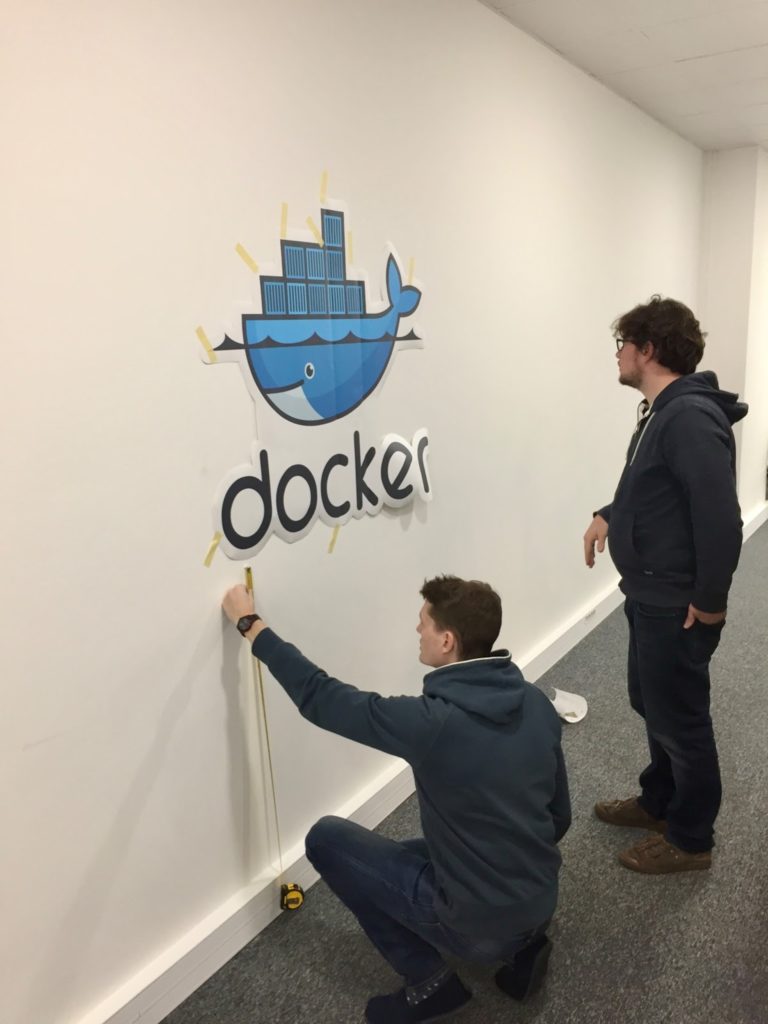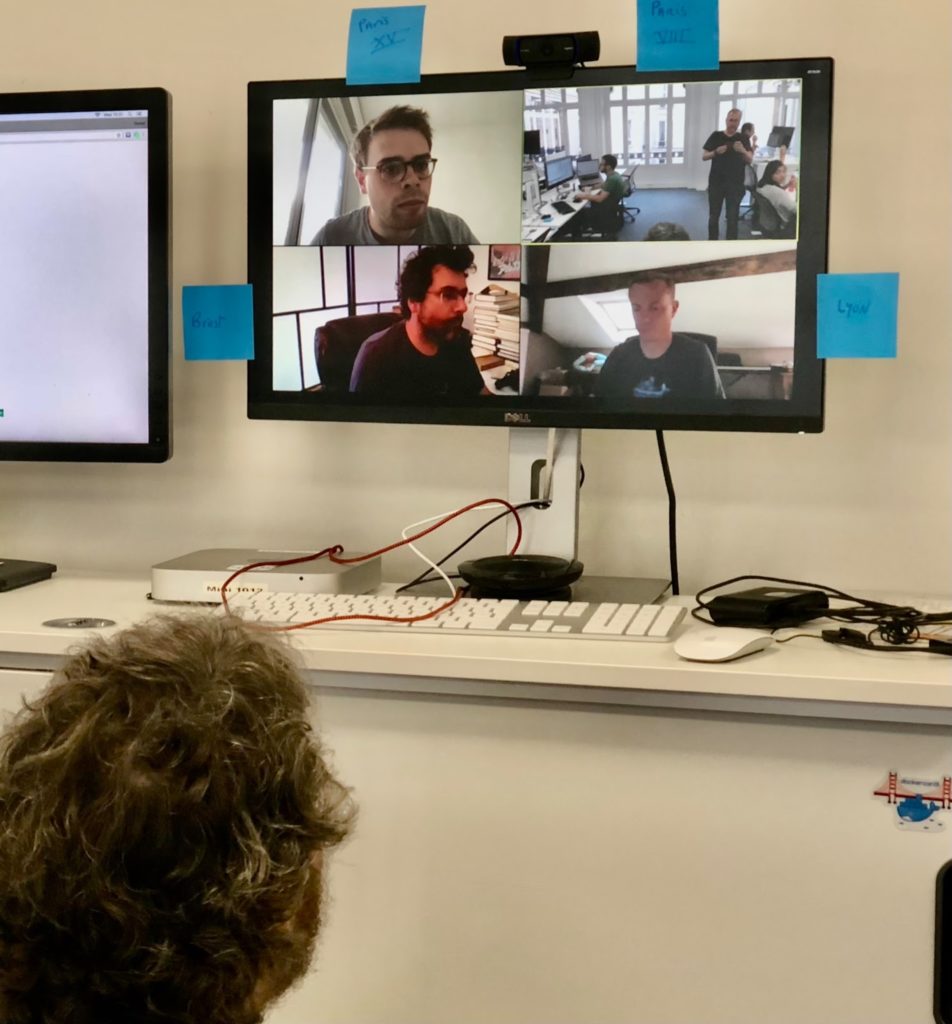Docker Inc. started like many startups with engineers working from a single location. For us, this was in the Bay Area in the US. We were very office-centric, so the natural way to increase diversity and to get engineers from different cultures to work together was to open new offices in diverse locations. Right from the start, our goal was to mix American and European ways of producing software, giving us the best of both cultures.
Step 1 – Opening European offices

In 2015, Docker started to open offices in Europe, starting with Cambridge in the United Kingdom and followed by Paris in France. With these two locations, the long road to gaining experience working with remote employees began.
Having multiple offices scattered around the world is different from being fully remote. But you still start experiencing some of the challenges of not having everybody in the same location simultaneously. We spent a great deal of our time on planes or trains visiting each other.
Despite the robust open-source culture of the company, which shows that you can build great software while not having everybody in the same room, we still had a very office-centric culture. A lot of the context of a given product conversation or decision was linked to a given office. When you were not in the office where the decision was made, you only had partial information about the decision.
We learned a lot during this time: organizing work effectively and enjoyably while appreciating different cultures, time zones (France and US West Coast are 9 hours apart…), paperwork, salary expectations, public holidays, etc.
Step 2 – Remote Engineers in an office-centric culture
The products Docker builds have a significant impact on the world, so hiring great engineers has never been a problem at Docker. We were artificially limiting ourselves to hiring talent close to one of our offices. We could open more offices or start hiring people as fully remote wherever they lived. In 2017, we hired a couple of very experienced remote engineers who had 5+ years of experience working remotely. They brought a lot of their best practices, and with them, the company learned how to be better at working with remote engineers.
One of the areas we made changes was in how we ran meetings. Instead of only having remote employees dial in and struggling to follow conversations in conference rooms, we got everyone, even those in offices, to dial in with a good headset so that everyone was on the same level. This drastically improves the quality of meetings for those who are remote.
We also learned the power of good writing as time zones forced communication to be more asynchronous. Concise, clear, and effective, writing became critical.
We worked hard on our company core values, one of them is “Open Collaboration”. Following that value, we started to close 1600+ slack channels to concentrate our communication around just a few dozen. We advocated for communication to happen in public slack channels by default and limiting the usage of private channels to only when necessary.
Remote engineers felt better, but there was still a life in the office they couldn’t grasp, this is when we introduced Wormholes. Wormholes are pretty low-tech, they are a monitor, a camera, and speakers open in the offices all day. Remote engineers connect to it, have a view of the offices, and can feel the ambiance and hear general conversations. They can also slack someone to come close to the wormhole for “direct” communication. They were pretty popular until we left our offices to start working from home.

Step 3 – Remote work during a worldwide pandemic
In early 2020, once we were pretty experienced at remote working, we advocated for all positions to be open in any country that we had legal entities, making it easier for us to hire good talent.
Then Covid hit us along with everyone else. Relatively confident in our experience of working remotely, we thought that we were more ready than others to have everyone working at home. We quickly realized that working remotely and working remotely through a pandemic are not the same at all.
While we had the software and culture to embrace a remote-first workforce, the pandemic itself brought new challenges. Not being able to see each other in the office or family and relatives for such a long time has taken a toll on everybody. This also highlighted inequality that we didn’t realize before: people with small apartments, young kids, or living alone were hit harder than those living with relatives and enjoying a large house.
These hard-learned lessons fueled the way we shape the future of work at Docker. Giving employees help to set up their home office, helping them move from one city to another, and generally spending enough time and energy making sure everybody is comfortable as we transition to this exciting new future of work.
Step 4 – Embracing remote-first
While other companies are pushing their employees to get back to offices, we decided that there is no turning back for Docker Inc. and that we will stay remote-first. All of our offices are closed and will remain so. When Covid releases its pressure on the world, we will offer employees who live near to each other support to meet up and continue to collaborate and drive our culture, while we will look for chances to do this as a whole company both remote and in-person as things return to normal in the future.
Our journey from office-centric to remote-first has been exciting, and we’re eager to get even better at being remote-first.
We are now in a position to hire almost wherever you are, so if you’re interested in living this experience with us while producing impactful software, we have positions open in Engineering and Product.
